Fifteen 2021 Releases You May Have Missed But Should Not
Keep scrolling to find names that should become part of your watchlist!


The year is 1992. A period film is being shot at an Irish beach. A young woman walking along the beach halts to watch the production with a smile on her face. She approaches closer and we see her interact with a few crew members. A sudden cut to a street in Ireland shows the same woman crying, running down the street, clutching her belongings. Later revealed to be the first woman to speak on the record against the then-famed, now-hated Hollywood producer Mr. Harvey Weinstein (played by Mike Houston), these two scenes of Lola Petticrew as a young Laura Madden introduce us to the world of director Maria Schrader’s latest film She Said.
She Said is a film based on the book of the same name written by New York Times investigative reporters Jodi Kantor and Megan Twohey, who wrote the Pulitzer Prize-winning article about Harvey Weinstein’s pattern of misconduct towards women. It stars Zoe Kazan and Carey Mulligan as the two reporters respectively and Patricia Clarkson as the team’s editor, Rebecca Corbett. The New York Times’ executive director from 2017, Dean Baquet, is played by Andre Braugher and a brilliant Jennifer Ehle appears as the adult Laura Madden. After the emotional opener, She Said takes a bit of a confusing path to arrive at the beginning of the actual story. It depicts Twohey on a phone call with Donald Trump after she’s published a piece about sexual harassment allegations against him. It then cuts to her being jaded by the fact that he is elected anyway. Soon after, we’re seeing her pregnant and giving birth. We don’t really see Jodi in action until around this time, when we see the New York Times employers huddled around a TV, watching Bill O’Reilly being forced out of Fox News for sexual misconduct. Next, we see Dean and Rebecca tell a room full of journalists to look for more stories on workplace sexual harassment.
It’s soon after when Kantor introduces Rebecca to a possible story about Rose McGowan claiming Harvey Weinstein harassed her that the film’s plot really starts developing. Once we get there though, the ball keeps rolling and never slows down till the end credits start rolling. It’s like a “buckle your seatbelts” moment because despite being a dialogue-heavy and minimalist independent film, She Said feels like a thriller. We follow a couple of hardworking and passionate reporters who talk to many scared and scarred women, trying to find a source who is willing to take a public stance against the biggest name in Hollywood. It’s an underdog story at its core, but also one rooted in social reform. Megan and Jodi’s work spearheaded a rebellion of sorts that culminated in the #MeToo movement. For those who don’t know the full story, the film is even more fun to watch because it takes time to trace the development of the story from a whisper about Harvey to a collective testament of his pattern of behavior.
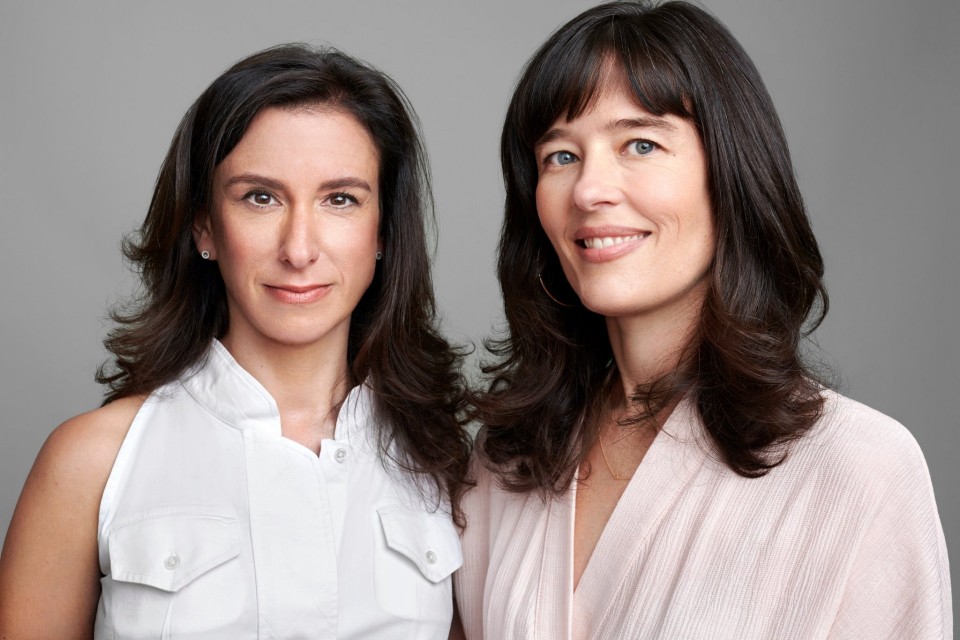
Screenwriter Rebecca Lenkiewicz worked closely with Jodi Kantor, Megan Twohey, and Rebecca Corbett to create a taut and thrilling narrative. It’s not very dramatized, quite like the Academy Award for Screenwriting-winning journalism dramas Spotlight and All the President’s Men. None of these films prioritize thrill over realism and yet, feel like thrillers. There is a real-life rush of uncovering a dark plot and giving a voice to the wrongfully silenced. There is also the fear of discovery and the concern for the consequences of publishing “heretic” claims that define such narratives. Even if we know Megan and Jodi’s work eventually led to Harvey’s arrest, She Said doesn’t let us relax just because the story’s outcome is positive. It takes us through the nerve-wracking journey of the women involved, that is the reporters as well as the victims/sources (whistleblower has a negative connotation that I refuse to attach to the respectable and brave work these women did).
She Said doesn’t beat around the bush with intentions beyond telling the story at the center of its narrative. Instead of going deep into the personal drama in the lives of the people involved, it stays razor-focused on the destination of its story, which is the eventual publication of the article written by Jodi and Megan. And yet, that never seems to create a sense of detachment. The emotional thread is very well-woven into the tight narrative. Even if it mainly just involves conversations between the involved women or between the reporters and those who want to deter them from pursuing their investigation, the storytelling itself is emotionally driven. The plot points feel more like stepping stones toward emotional catharsis than narrative checkpoints.
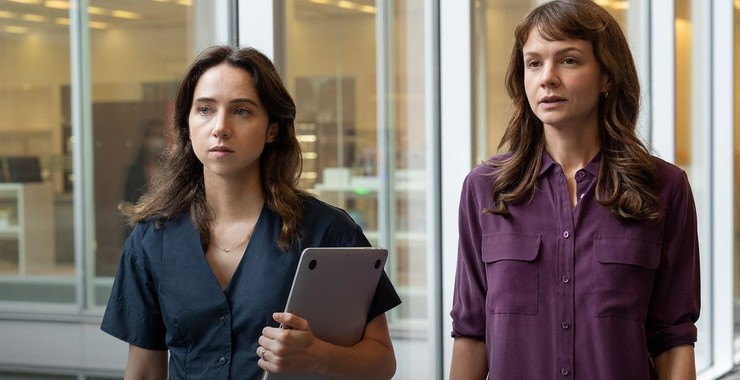
Of course, She Said recounts the scarring incidents of Harvey’s misconduct and sexual abuse, but it does so with the utmost respect for his victims. Firstly, there are no dramatic or visual re-enactments of the sexual abuse stories. One noteworthy scene involves the camera panning through the corridors of the infamous Peninsula hotel while an actual audio recording of a conversation between Harvey and model Ambra Battilana Gutierrez plays in the background. After she’d made a report against him claiming Harvey had groped her at his Tribeca office, New York Police had sent her wearing a wire to her next meeting with Harvey. The audio from that confrontation can be heard in the aforementioned scene. Another laudable instance is when Laura Madden (Jennifer Ehle) describes her experience with Harvey to Jodi Kantor. Her words play as a voiceover while the screen floods with stills of a hotel room. There’s some minimal camera movement too, but the scenes are composed entirely of visuals of inanimate objects in their own state of disarray which complements Madden’s words. Jennifer’s haunting voice is more than enough to make you feel her character’s trauma.
She Said also deserves appreciation for the way it treats the other women who spoke with the reporters but didn’t or couldn’t go on the record. Instead of portraying them as weak, the film depicts them as willing but scared. All of them have passionate reactions when asked about their experiences with Harvey, which tells you they do care and want to take the man down, but are either legally bound by NDAs or afraid for their careers. It’s in those moments that their personalities get established. Just a few seconds of reaction and you feel the depth of fear that Harvey’s stature gave these women. Be it Samantha Morton as Zelda Perkins or Angela Yeoh as Rowena Chiu, all the performers empathetically portray the women, giving them agency even in their fear.
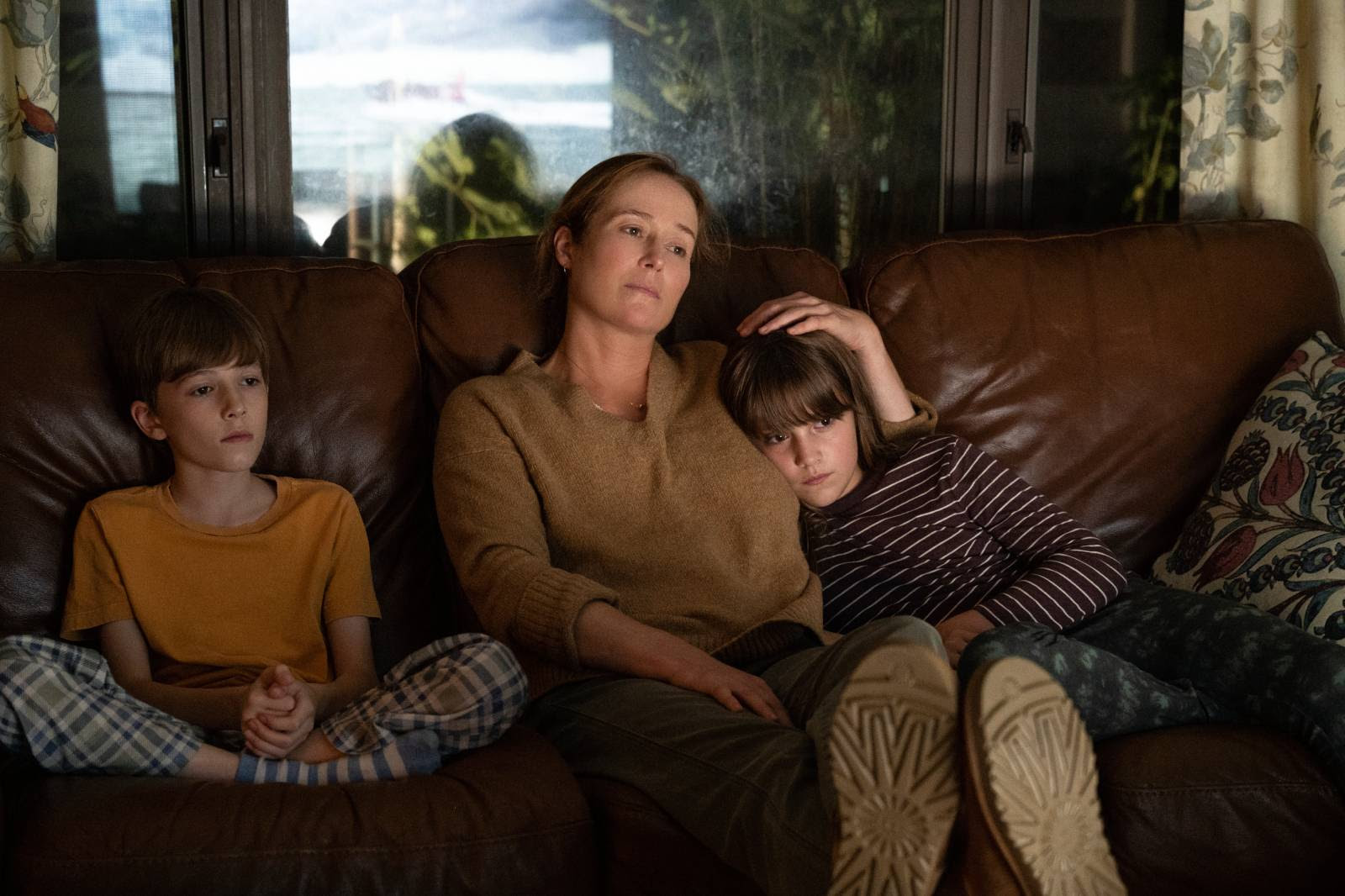
Both the director and the leading ladies are grateful to Jodi and Megan for including their personal lives in the narrative. Their home lives are depicted in the film, something that’s not there in the book that She Said is based on. Megan was going through postpartum depression while Jodi’s only source of comfort seemed to be her children on some days. Carey Mulligan does an amazing job of portraying Megan, especially in those moments where you see her feeling empty be it because the women have just been openly discredited in front of her by Harvey’s team or because of the innumerable obstacles in her path to just get information, let alone the publishable kind. Jodi and Megan both came forward with their personal lives because they believe that’s necessary to depict journalism honestly. It’s often shown negatively as a manipulative profession, but She Said treats its protagonists respectfully in showing how the women were more motivated by the hope that their work could maybe help their own daughters.
It’s that sense of justice for the past victims and for the future victims-to-be that drives the emotional thread of She Said. The story is riveting in a mystery thriller sort of way, but it demands emotional investment because of the sense of purpose that defines every character. Even the women like Rose McGowan (voiced by Keilly McQuaill) who are famous names we all know, but never appear on screen, embody that sense of necessity in the way their mentions push the narrative forward. Every woman named is a hopeful step towards a cathartic conclusion of the investigation for the article. There are small victories to celebrate and big losses to mourn but no time to stop and process because it’s an investigation that must be completed to start proceedings against Harvey. So even if the screenplay seems clinical in its approach, She Said is an emotional drama as much as a thriller since it’s told from the perspective of the protagonists who are personally driven to get to the bottom of this story. It triggers tears during the scenes where the victims are describing their experiences. But it also elicits celebratory responses whenever a breakthrough happens, like when the first person willing to go on the record contacts Jodi to say she will speak out publicly and not anonymously.
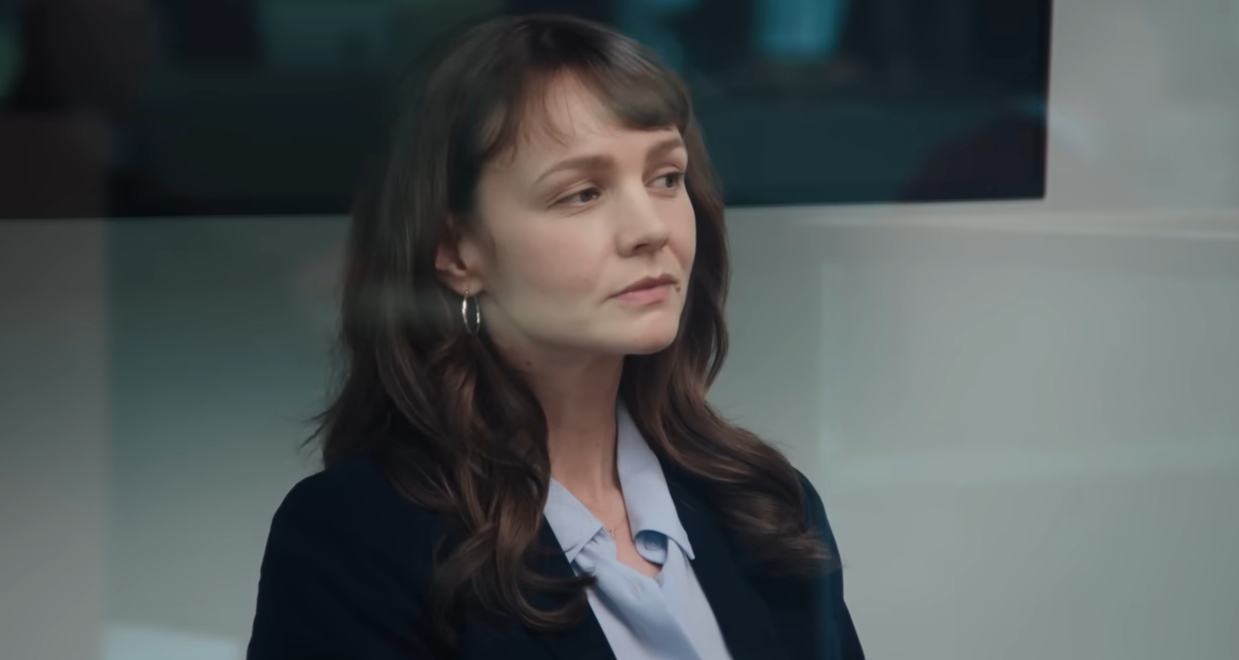
The film is aptly titled She Said. This is not the story of the article that started Harvey Weinstein’s downfall. It’s the story of the article that began a widespread re-evaluation of women’s safety rules in the workplace. It’s about the women Harvey hurt. It’s about the women men like Harvey had been hurting for years. She Said takes a deep dive not into Harvey’s life, but into the investigation led by two women. All the space in the film is reserved for women. Patricia Clarkson deserves a special mention for her embodiment of the dedicated leadership role that Rebecca played during the investigation. She takes over whenever the reporters feel overwhelmed and helps them find their drive again. A powerful supporting woman role like that is absolutely essential to such a story.
Of course, the actual victims who spoke are the real heroes here and She Said never loses sight of that. The protagonist may be the two journalists, but Megan and Jodi are never given narrative control. Their hard work never goes unappreciated of course, but their role is to provide a voice to the women who aren’t able to find one or aren’t afforded one. This is why a female perspective is so important here. A re-enactment of sexual assault is never a positive influence on a story, especially not with respect to the victim’s side of the story. It often becomes disrespectful, like in the Kennedy sex scene from Blonde. Even if it’s sensitive and respectful, just because of the nature of the situation, the scene has to surrender power to the abuser. So while a film like Bombshell is an important look at workplace sexual harassment, it becomes difficult to see, not just because of the subject matter, but because there are moments when the women who are given narrative control and agency, don’t have any autonomy on screen.
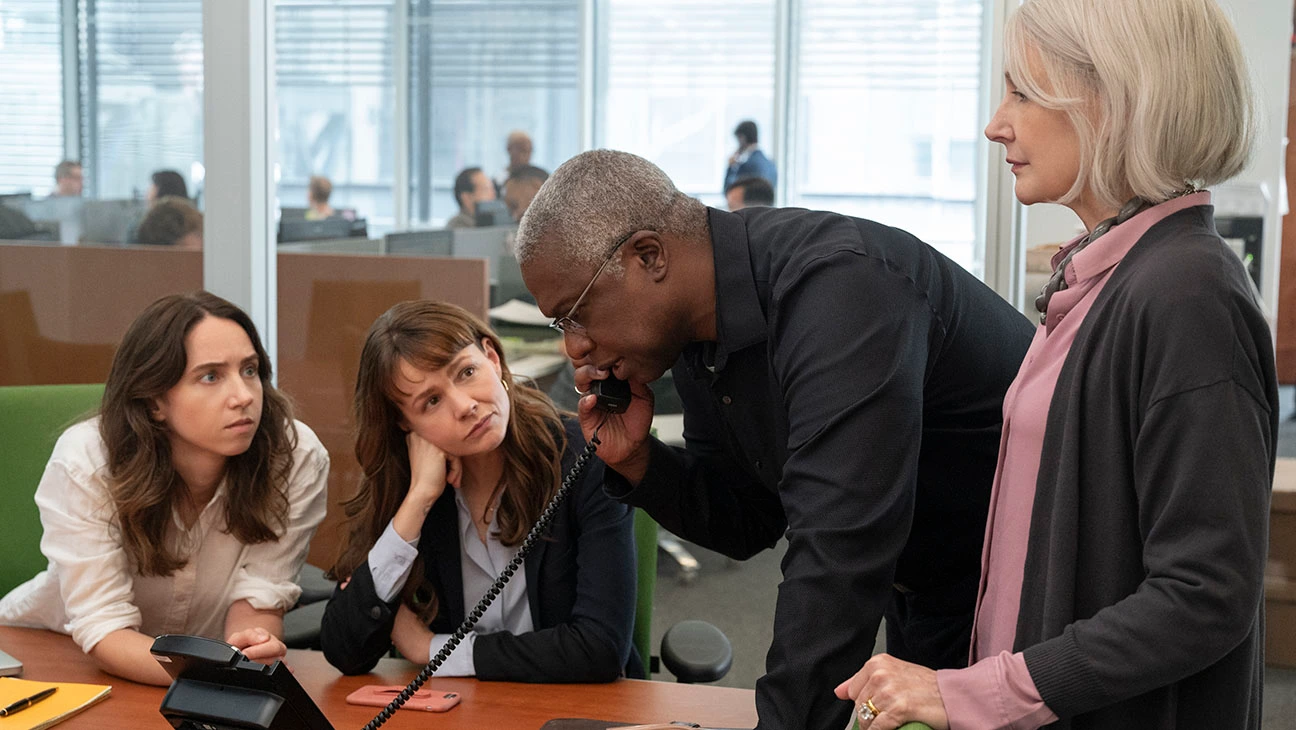
She Said does not pull its punches when calling out Harvey’s crimes, but it never depicts the actual crimes, and that way, the control never leaves the women who are driving the story forward. But that never takes away from the emotional toll. This is what filmmakers should be learning from Maria Schrader. Abuse doesn’t have to be explicitly shown for its weight to be felt. It is sad that the lesson has to be taught though, because in real life, reading about the accounts and hearing about them in court got Harvey Weinstein imprisoned! So why would filmmakers ever feel the need to profit off of trauma by visually recreating particularly harrowing scenes? She Said goes a considerable distance in being sensitive towards women by only giving Harvey Weinstein one scene of physical presence. Even then, he is shown with his back turned to the camera. His voice is heard a few times, but he’s never in control. One particular phone call has him whining about Gwyneth Paltrow’s possible involvement. He practically nags the reporters for their sources like a child. Andre Braugher’s screen presence shines in these confrontations, because he is present in all the scenes where Harvey speaks, and Andre has perfectly embodied Dean’s no-nonsense attitude towards Harvey.
The female perspective is the biggest highlight of She Said. Not only is Rebecca Lenkiewicz’s screenplay devoid of any men in control, but Natasha Braier’s camera is also very aware of who to pay attention to. With a film as lacking in action as She Said, cinematography becomes less of a visual tool and more of a narrative tool. The camera is a silent observer in the film, carefully ensuring that the flow of agency doesn’t become curated by the choice of framing, but is never distant enough to lose the emotional power of the story. Panning and zooming are at a minimum and this way, the dialogue controls the scenes. Braier has worked previously on visually driven films like The Neon Demon, so this is a change of pace for her, but she felt a personal need to be involved with She Said because of the story it tells. The women were in creative control during the making of the film and it shows in the way it’s passionately protective of the women mentioned in the story or appearing on screen.
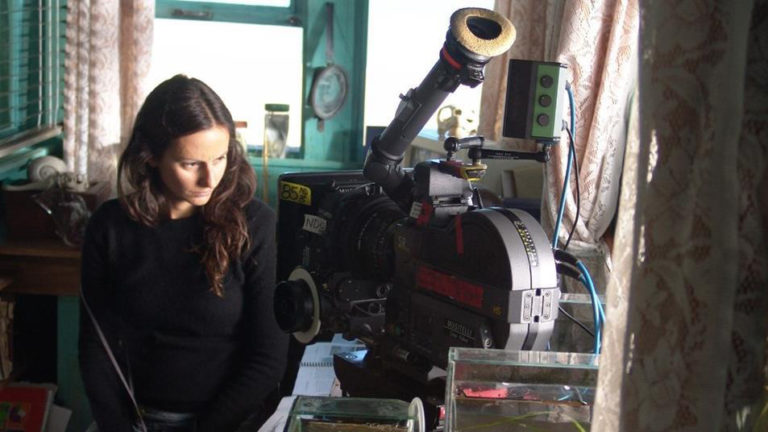
The details of the case are open to the public. In fact, the film is based on a book itself which let people know about the story that She Said tells. Harvey Weinstein is in prison now. Even then, She Said feels like an essential film that needed making. It may feel like a necessary viewing for just those who aren’t aware of all the details of the case, but She Said has a lot to teach the industry about how to tell a women’s story. As mentioned earlier, it goes about its job by keeping a respectful distance from the personal lives of the victims. This is a line very commonly crossed and sometimes even without consultation of the real-life people whose stories are being told. A very recent example would be the case of Netflix’s limited series about Jeffrey Dahmer. Families of the victims of serial killer Jeffrey Dahmer weren’t consulted before committing their stories to the screen.
But it’s not just from a pedagogical perspective that She Said is important, even though that is a big reason in itself. The film is a cathartic and raw journey through one of the biggest defining moments of journalism in recent history. Even people close to the story or people fully aware of it can experience a personal moment of empowerment on seeing a female perspective that doesn’t allow any kind of male intervention and affords no space for men to take control of the narrative. It is also a much-needed acknowledgment of the bravery of the women involved and a loving tribute to the months of hard work done by Jodi, Rebecca, and Megan. So She Said isn’t only responsible for bringing to light stories that are unknown to those who didn’t follow Harvey’s prosecution very closely. It also focuses on honesty, not just as a means to justice, but also as a way of depicting journalism positively. Reporters sometimes get a bad reputation for having an agenda, but with such a story, an agenda is absolutely necessary. Without a personal need to tell these stories, driven by a wish to do right by the human beings who have suffered inhumane treatment, it is impossible to carry on when everything seems to be opposing the endeavor. In fact, it goes one step forward from the book it’s based on, by including the personal lives of Jodi and Megan in the narrative, something that emotionally grounds the narrative even more.
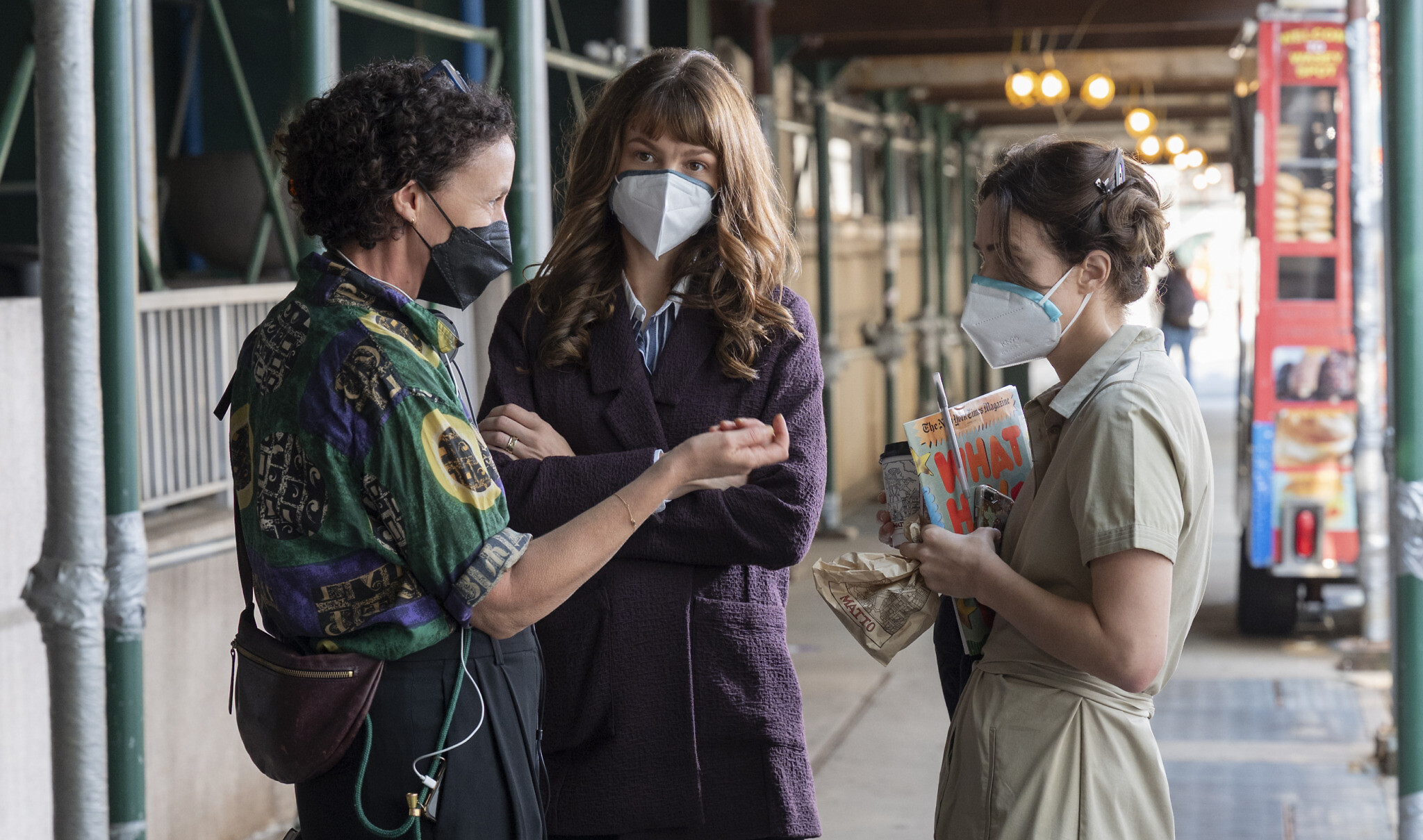
There is a moment in She Said where Jodi says she is worried the two of them know so much but will be taking it to their graves. Megan replies by saying she is worried they’ll write the piece and nothing will happen. Then they both ask each other if they regret taking on the assignment and both of them reply with a relatively emphatic “No”. This moment single-handedly makes the film feel like necessary viewing for everyone. The story is out and it was difficult to put into ink, but just how difficult is impossible to comprehend without being an actual part of the process. She Said gives viewers a way of participating in the momentous investigation. It also provides an outlet for those who feel trapped by the desolation that defines the experience of speaking out against people in power. Just like the article and the #MeToo movement, the film could help a trapped person find the courage to fight back.
Related lists created by the same author
Keep scrolling to find names that should become part of your watchlist!
Related diversity category
As a frequent “the book was better” extoller, this movie was well worth the watch.
Related movie/TV/List/Topic
'Free Guy' combines classic Disney (a white heteronormative love story), exploration of popular video games and the culture around them, and Ryan Reynolds adult humor in the best way to make a super fun family flick.